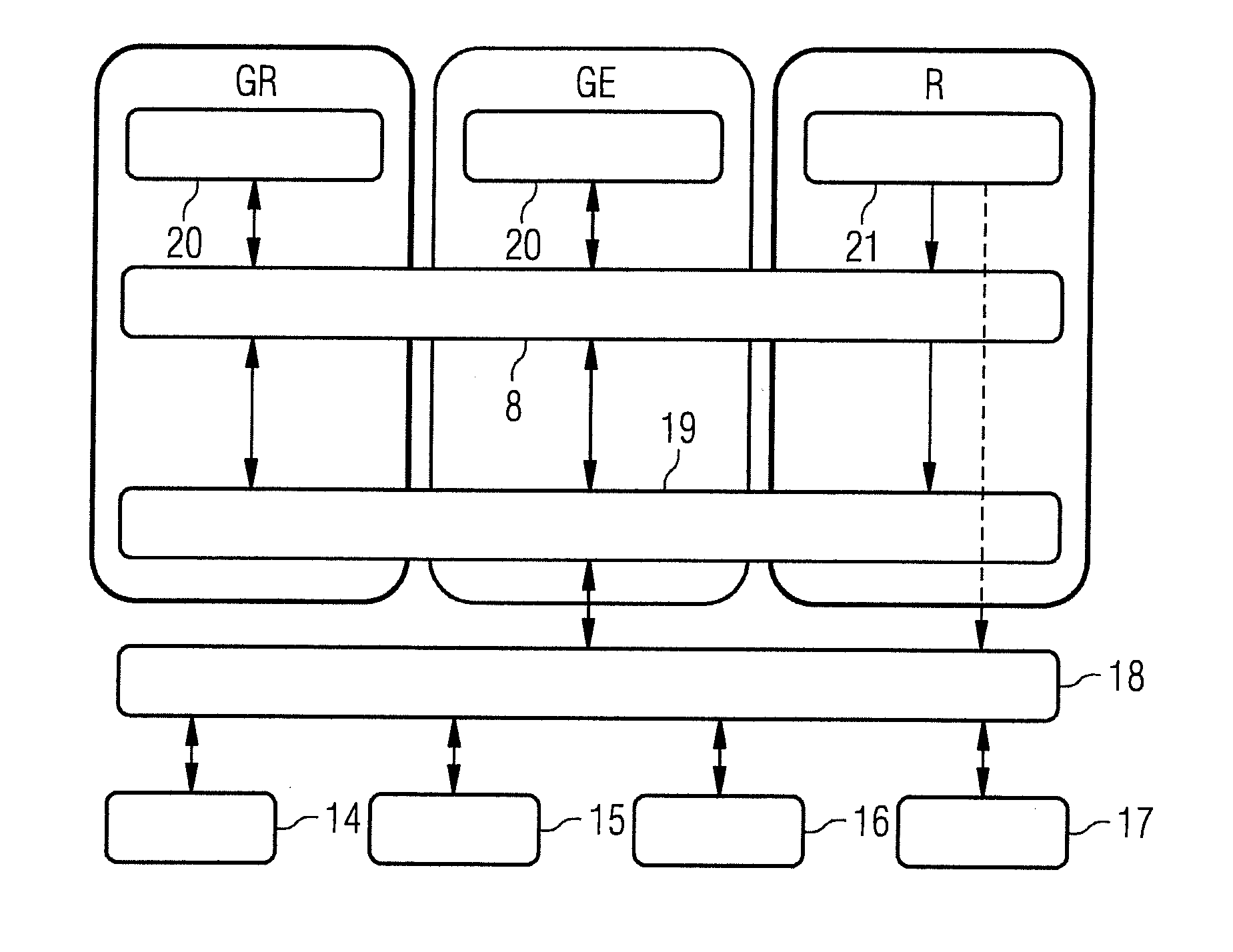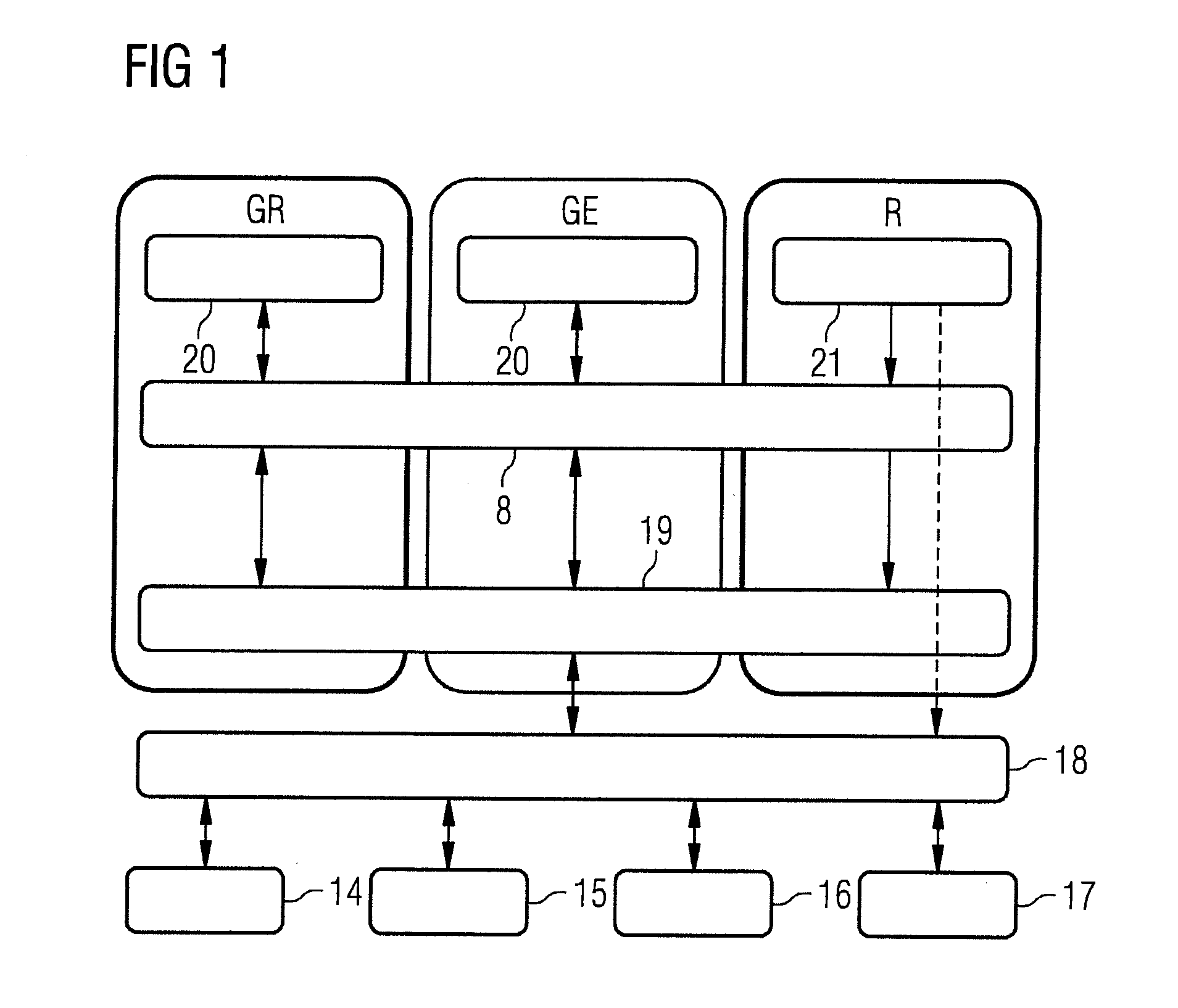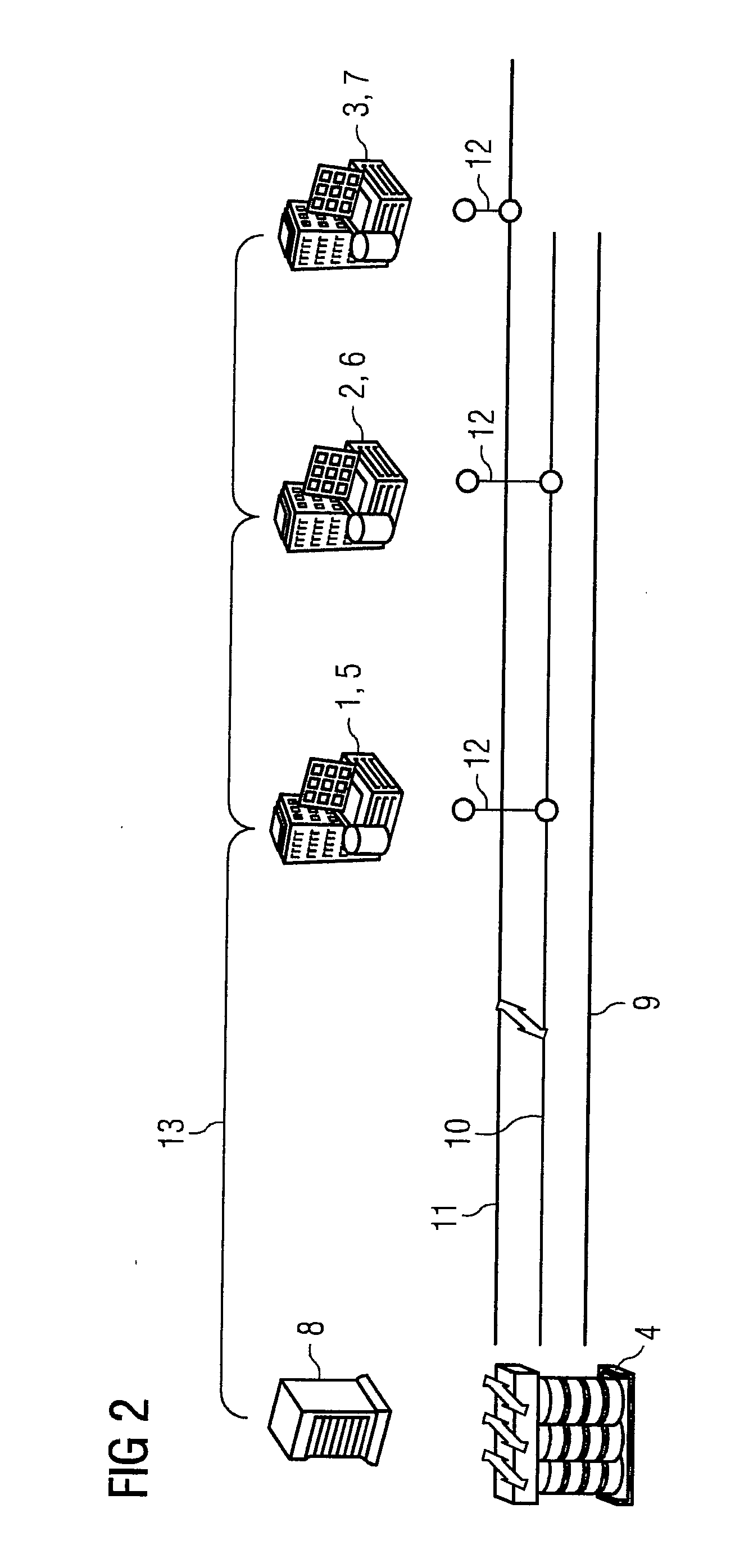Network Regulation Upon Threshold Value Overshoots in a Low Voltage or Medium Voltage Network
- Summary
- Abstract
- Description
- Claims
- Application Information
AI Technical Summary
Benefits of technology
Problems solved by technology
Method used
Image
Examples
first embodiment
[0059]In the method, all the building automation systems 5, 6, 7 receive the same action instruction with the same probability factor. Only a different selection factor of the individual building automation systems 5, 6, 7 can cause the smart buildings 1, 2, 3 to contribute with different priority to the rectifying of the threshold value overshoot.
[0060]However, the smart building 3 can contribute nothing by complying with the action instruction, because it is not connected to the affected conductor strand 10. If the smart buildings 1, 2 do not have sufficient emergency reserves, the problem cannot be solved by the smart buildings 1, 2 and the central regulation unit 8 must notify this to the central site of the network operator. A disadvantage of the first embodiment of the method is that all the smart buildings 1, 2, 3 supply the maximum emergency reserve without solving the problem.
second embodiment
[0061]In the method, in which the topology of the low voltage network is known in relation to the building automation systems 5, 6, 7, the individual building automation systems 5, 6, 7 receive different action instructions, but with the same probability factor. An action instruction to a building automation system could therefore be “reduce effective power xy kW”, whilst the action instruction to another building automation system is “reduce effective power yz kW”, possibly also depending on the topology.
[0062]For this purpose, the central regulation unit 8 can have a topology model and, based thereon, select individual smart buildings 1, 2, 3 or a group. This can occur, for example, via a contribution matrix in which the effectiveness of individual smart buildings 1, 2, 3 at particular network nodes is stored. In order that in this case a particular certainty factor or a particular fairness can also be implemented, the group is not reduced to the smallest possible (e.g., not to on...
PUM
 Login to View More
Login to View More Abstract
Description
Claims
Application Information
 Login to View More
Login to View More - R&D
- Intellectual Property
- Life Sciences
- Materials
- Tech Scout
- Unparalleled Data Quality
- Higher Quality Content
- 60% Fewer Hallucinations
Browse by: Latest US Patents, China's latest patents, Technical Efficacy Thesaurus, Application Domain, Technology Topic, Popular Technical Reports.
© 2025 PatSnap. All rights reserved.Legal|Privacy policy|Modern Slavery Act Transparency Statement|Sitemap|About US| Contact US: help@patsnap.com



